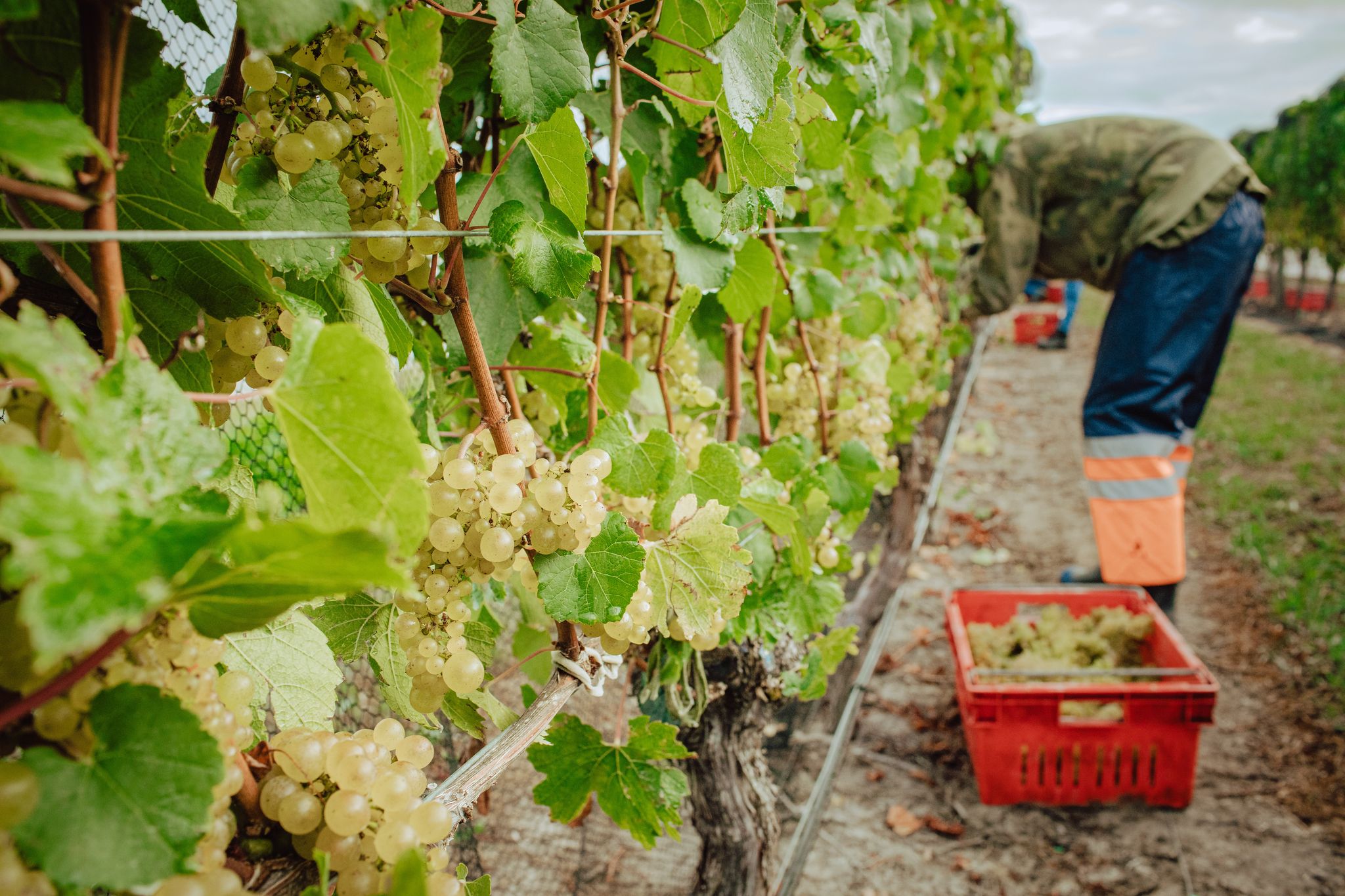COVID restrictions leave producers short on seasonal workers

The ongoing effects of the pandemic have caused the emergence of labour hire issues for the wine industry on both sides of the Tasman. Stephen O’Loughlin looks into the impact on seasonal staffing and how this is likely to be addressed for next year’s vintage.
Lengthy border closures and state lockdowns have had major impacts on the staffing of wineries and vineyards for both employer and employee across the course of the past two years.
And while it is planned for all states to open their borders by Christmas, once the country is at 70-80% vaccinated, it is still unclear how movement between regional areas will function when this does occur.
In 2020, the New South Wales wine industry suffered greatly from a lack of skilled and semi-skilled workers right across the wine sector from people working in vineyards, pruning in winter, managing the growing season in spring and summer, and then picking at vintage time to people working in the winery, again particularly vintage staff to people working in tourism such as in cellar doors.
It is believed that the shortfall in just vintage staff in wineries and vineyards alone in NSW was as high as 1000, which was largely affected by the reduction in overseas travel.
No longer were we seeing backpackers filling the semi-skilled tasks, like picking and pruning, or those on working holiday visas undertaking more winery-based skilled roles, such cellar hand positions.
Wineries and vineyard owners got through primarily on their own or with limited local workers aiding them to still make this year’s vintage a successful one.
However, while it was hoped that things would be on the improve in 2021, they have unavoidably got worse with longer shutdowns, especially in NSW and Victoria, closing cellar doors and restaurants altogether and reduced numbers on site to actually produce the wine and maintain crops as well.
The remaining international workforce returned home or has been attempting to leave and thus the domestic workforce has been stretched to it limits and very much sort after across all fields of the agriculture sector.
NSW wineries have managed the pruning season by redeploying existing staff from other areas of their business such as cellar door and winery production to work in the vineyards.
The lockdowns have also presented challenges getting contract pruners in, especially in the Greater Sydney area.
The Government has offered assistance packages, like the Seasonal Workers Program and Pacific Labour Scheme, but gaining access to these funding programs has been difficult for the winery and vineyard owners because these packages have required employees to be contracted for several months which does not fit in with the nature of the wine industry where people are needed for intense bursts at vintage and pruning, for example.
These schemes also require the employers to pay large fees for hotel quarantine which can be over $3,000 per person.
Further challenges have arisen by the restrictions on movement of people and machinery from interstate, particularly Victoria and South Australia.
The NSW Wine Industry Association has been working closely with its State Government through the Department of Primary Industries and currently has a weekly Horticulture COVID Working Group meeting to raise and, hopefully, address all of the industry’s concerns.
Executive officer of the NSW Wine Industry Association, Angus Barnes, said that it has certainly been beneficial to hear from both State and Federal Governments as well as other industries experiencing similar problems but, while some solutions have been implemented, the underlying issue of staff shortages has not been resolved.
The NSW Agriculture Minister, Adam Marshall, early last month did call for an East Coast Agriculture Labour Taskforce that would:
- Identify opportunities to provide flexibility in Commonwealth Pacific Mobility Programs to access workers and their movement within and across jurisdictions,
- Develop local initiatives and solutions to mobilise labour and equipment,
- Identify innovative tools, technology, processes and machinery that will automate systems to reduce the reliance on temporary labour,
- Identify skills, education and training gaps that will support industry into the future,
- Develop a roadmap to address structural and reputational issues in the sector, and
- Advocate on behalf of the east coast states on issues of national importance
At the same time, the NSW Farmers Federation released a 10-point plan for consideration around ongoing agricultural workforce requirements which requests the following measures to be implemented:
- Certainty for mobile workers
- Targeted communications campaign
- Coordination assistance
- Incentives to participate in agricultural work
- Localised initiatives
- Facilitate timely flow of international seasonal workers
- Create and deploy ‘harvest ready’ training and upskilling
- Assist agricultural businesses to strengthen COVID-19 mitigation measures
- Appropriate accommodation options
- Establish an Agricultural Seasonal Workforce Working Group
Meanwhile, actual changes that the NSW Wine Industry Association envisage coming out of the pandemic’s lockdowns include more mechanical harvesting due to labour shortages, increased costs of employing vineyard staff (which is up by as much as 40%) having to be passed on, and continued working closely with interstate counterparts, particularly in Victoria and South Australia, to bring about suitable agreements around the safe and simple movement of people and machinery, especially during harvest.
Looking ahead to 2022
It is also highly unlikely that overseas labour will be back for the 2022 Vintage either so it will involve getting by with locals once again.
The issue looking further ahead though will be about training, encouraging and employing the future labour force back into the wine and winegrape industry over the long term which the NSW Government is aware of and assisting with, through such programs as Agskilled 2.0, which offers free accredited training for all fields of agriculture, particularly in viticulture where the wine industry is concerned.
Across the other side of the country, the Margaret River wine region in Western Australia has not been adverse to similar labour constraints.
As is the case around the whole of the country, the region’s labour is a mix of locals, working holiday visa holders and seasonal workers and the significant reduction in those working holiday people has had the biggest impact this year.
Data has revealed that the number of people with working holiday visas in Australia has decreased by over 100,000 from the beginning of the pandemic in March 2020.
With reductions like that, it is no wonder that labour issues have been of major concern.
“It necessitated a lot of pre-planning and forecasting by the wineries to ensure harvesting could be achieved when required,” said Margaret River Wine Association chief executive officer Amanda Whiteland.
“Many were affected and called on anyone available to help with the harvest. Many wineries called on their cellar door staff, stranded travelers and retirees to assist with some hand picking this year.”
In New Zealand, it was very much the same story.
Any looming labour shortage around the forthcoming vintage is currently being addressed, looking at past experiences from this year’s vintage and assessing whether wineries and vineyards will need to seek out different means of staffing to get through the 2022 vintage or whether it will continue as normal.
“Supporting our members to attract sufficient seasonal labour will be the number one priority for New Zealand Winegrowers,” said New Zealand Winergrowers chief executive officer Philip Gregan.
“With borders unlikely to open and the traditional pool of backpackers dwindling, we expect seasonal labour to be the central issue to the industry’s ability to have a successful Vintage 22.
“Working closely with the horticulture sector, contractors and Government in the first quarter of 2021, we had the successful addition of 2,000 Recognised Seasonal Employer (RSE) workers through managed isolation and quarantine.
“A second cohort began arriving in July, to bring New Zealand’s total RSE workforce to just under 7,000 strong.
“The recent Government announcement that RSE workers from Samoa, Tonga and Vanuatu will be able to travel to New Zealand quarantine free is the result of significant work with officials and Government and will provide additional certainty for the industry to meet the coming seasonal tasks.
“We will continue to work with our regions, Government and stakeholders to ensure that they are aware of the likely shortages and the impact this will have on our members and supporting industries if they are not able to attract the workforce they need.”



